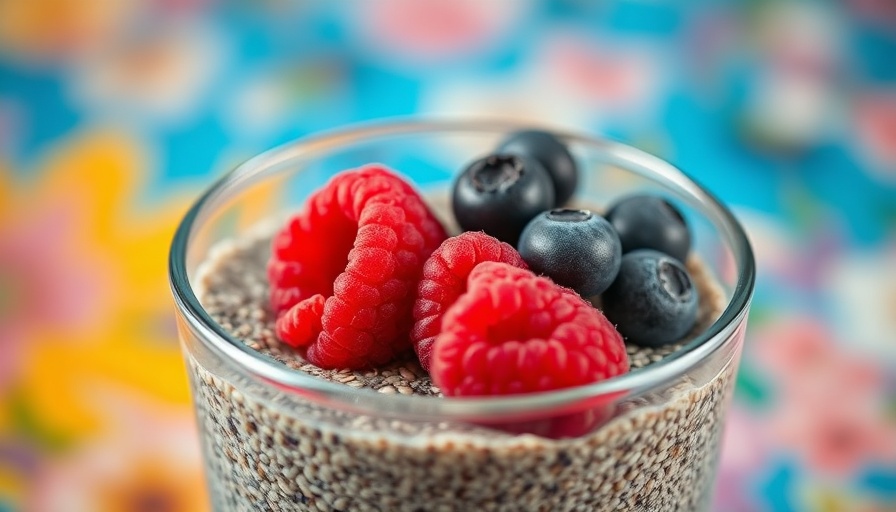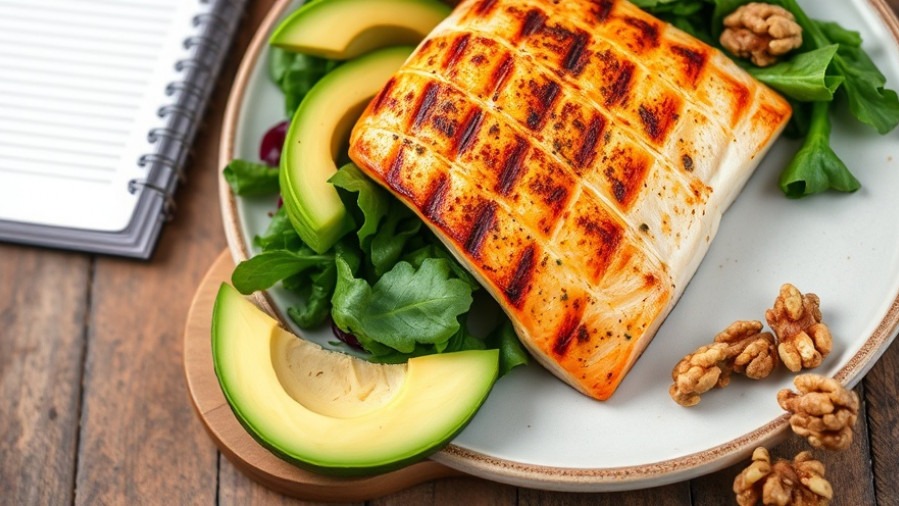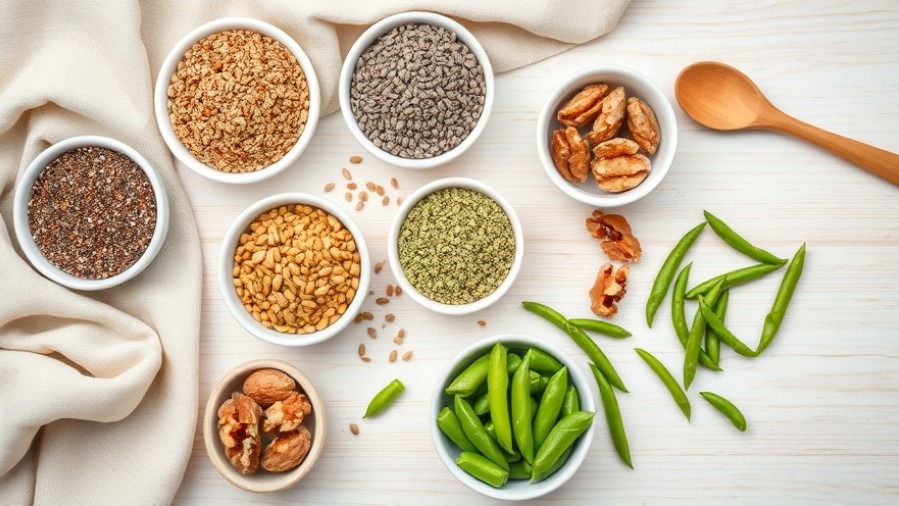
Discover Nutrient-Packed Alternatives to Salmon
Picture this: a Saturday morning at the Midtown Farmers’ Market. The scent of fresh herbs fills the air, the chatter of neighbors swapping recipe tips hums in the background, and a basket of local produce rests on your arm.
Among the stalls, you spot freshly caught trout from nearby lakes, golden walnuts from family orchards, and jars of flaxseed milled right here in California’s fertile soil.
These ingredients aren’t just flavorful—they’re powerful sources of omega-3s that can rival salmon in every way.
If you’ve ever thought about your omega-3 intake, you’ve probably heard how often salmon gets the spotlight. It’s rich, versatile, and nutritious.
But here’s the good news: you don’t have to rely solely on salmon. In the Sacramento region—where farmers’ markets, diverse culinary traditions, and plant-based creativity come together—branching out can make your diet richer, more interesting, and better aligned with your lifestyle.
Why Omega-3s Matter
Let’s start with the basics. Omega-3 fatty acids are healthy fats your body needs—but can’t make enough of on its own. That means you have to get them from food.
There are three key types:
ALA (alpha-linolenic acid) – found in plants
EPA (eicosapentaenoic acid) – found in fish
DHA (docosahexaenoic acid) – also found in fish
Together, these healthy fats help maintain heart health, brain and eye function, and can reduce chronic inflammation.
Harvard nutrition expert Frank Sacks explains it simply:
“Omega-3 fatty acids are essential nutrients for health, needed for functions like blood-clotting and brain-cell membranes.”
A helpful distinction: ALA, the type found in plant foods, supports overall heart health and may help reduce inflammation. However, the EPA and DHA found in fish are the forms most directly linked to brain, eye, and cardiovascular benefits.
Your body can convert ALA into EPA and DHA, but not very efficiently—so including a mix of both plant and seafood sources gives you the best balance.

Alternative Fish Rich in Omega-3s
If you love seafood but want to mix it up beyond salmon, these excellent options deserve a place on your plate:
Mackerel
This oily fish offers a rich, full flavor and a healthy dose of the same omega-3s found in salmon. Try it grilled with lemon and herbs for a dish that feels like coastal comfort food.
Tuna
Tuna is mild, accessible, and still packed with beneficial fats. It’s perfect for salads, sandwiches, or seared as a light entrée. Just stick with lighter varieties and enjoy it a couple of times per week for balance.
Sardines
Small but mighty, sardines deliver long-chain omega-3s (EPA and DHA) in abundance. Their rich, briny flavor pairs beautifully with Mediterranean dishes, crackers, or even pasta.
Herring
Known for its robust, smoky taste, herring is a staple in European cuisines and a hidden gem for omega-3 intake. Try it pickled or smoked for an adventurous twist.
Trout
Sacramento’s local markets often carry fresh trout, sourced from nearby lakes and streams. It’s tender, flaky, and just as rich in omega-3s as salmon—making it both a delicious and sustainable choice.

Plant-Based Omega-3 Alternatives
Whether you’re vegetarian, vegan, or simply reducing seafood, you can still meet your omega-3 needs. These foods provide ALA, the plant form of omega-3 that your body can convert (in smaller amounts) into EPA and DHA.
Chia Seeds
Tiny, versatile, and nutrient-dense, chia seeds expand when soaked, forming a gel-like texture that’s great in smoothies, yogurt, or overnight oats.
Flaxseeds
Ground flaxseed adds a nutty taste and texture to baked goods, cereals, and smoothies. It’s one of the easiest ways to give your meals an omega-3 and fiber boost.
Walnuts
Crunchy, satisfying, and heart-healthy, walnuts make a perfect snack or salad topping. Swap them in for other nuts a few times a week for an easy omega-3 upgrade.
Hemp Seeds
These small seeds carry a mild, nutty flavor and blend easily into smoothies, salads, or grain bowls. They’re rich in both omega-3 and omega-6 fatty acids for balanced nutrition.
Edamame
While edamame (young soybeans) isn’t as concentrated in omega-3s as seeds or nuts, it still contains a modest amount of ALA—plus plant protein, fiber, and antioxidants. It’s a smart addition for anyone aiming to eat more whole, plant-based foods.

Practical Tips for Boosting Omega-3 Intake
Making omega-3s part of your daily diet doesn’t need to be complicated. Try these simple, sustainable swaps:
Add chia seeds to your morning oatmeal or smoothie.
Replace part of your flour with ground flaxseed in baking recipes.
Choose walnuts over almonds or cashews for snacks.
Include 1–2 servings of oily fish each week (such as mackerel, sardines, or trout).
For plant-based diets, mix sources—chia, flax, hemp, and walnuts—to cover your bases.
Explore local farmers’ markets for sustainably sourced fish and locally grown seeds and nuts.
Why It Makes Sense for Sacramento Living
Sacramento’s food scene thrives on freshness and diversity. By exploring these alternatives, you’re not only expanding your own palate but also supporting local farmers, sustainable fishing, and eco-conscious food producers.
It’s a lifestyle choice that promotes health, community, and environmental responsibility—all while keeping your meals delicious and varied.
Nutrition experts agree that a balanced approach—combining both plant and seafood sources of omega-3s—is ideal for long-term wellness.
Final Thoughts
You don’t need to be a chef or a nutritionist to make smarter food choices—just a little curiosity and a willingness to explore. Whether you’re trying trout from a local market, experimenting with chia pudding, or topping your salad with walnuts, each small step supports your heart, brain, and community health.
So next weekend, when you stroll through the farmers’ market, think beyond salmon. Your next omega-3-rich meal might be waiting right there in your own Sacramento neighborhood.
Curious about how better nutrition can boost your energy and focus? Visit our Nutrition Guide for easy-to-understand wellness tips, and explore more topics on Sacramento Living Well.
---
Authored by the Sacramento Living Well Editorial Team — a publication of DSA Digital Media, dedicated to highlighting wellness, local living, and inspiring community stories throughout Greater Sacramento.
 Add Row
Add Row  Add
Add 





Write A Comment